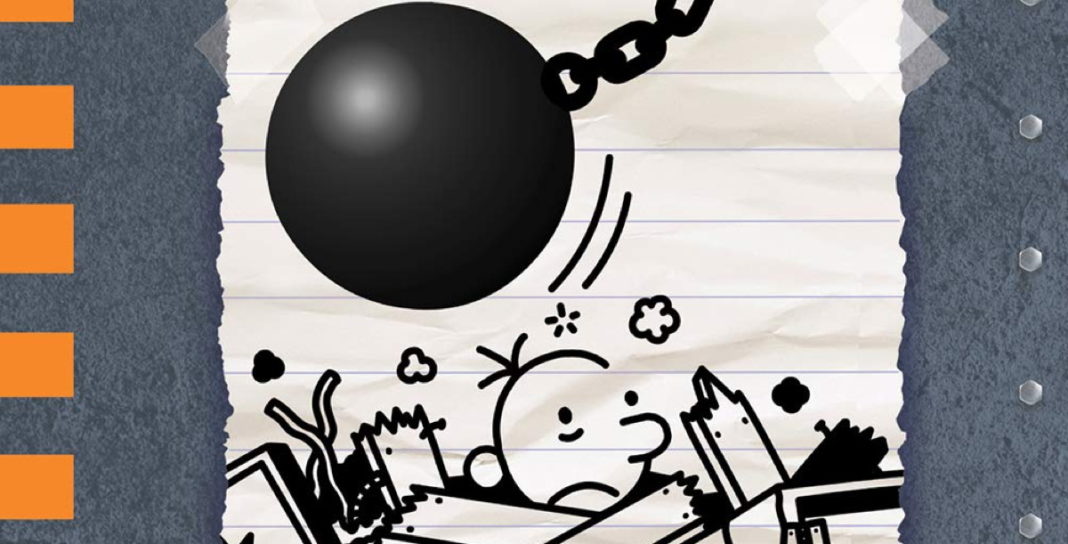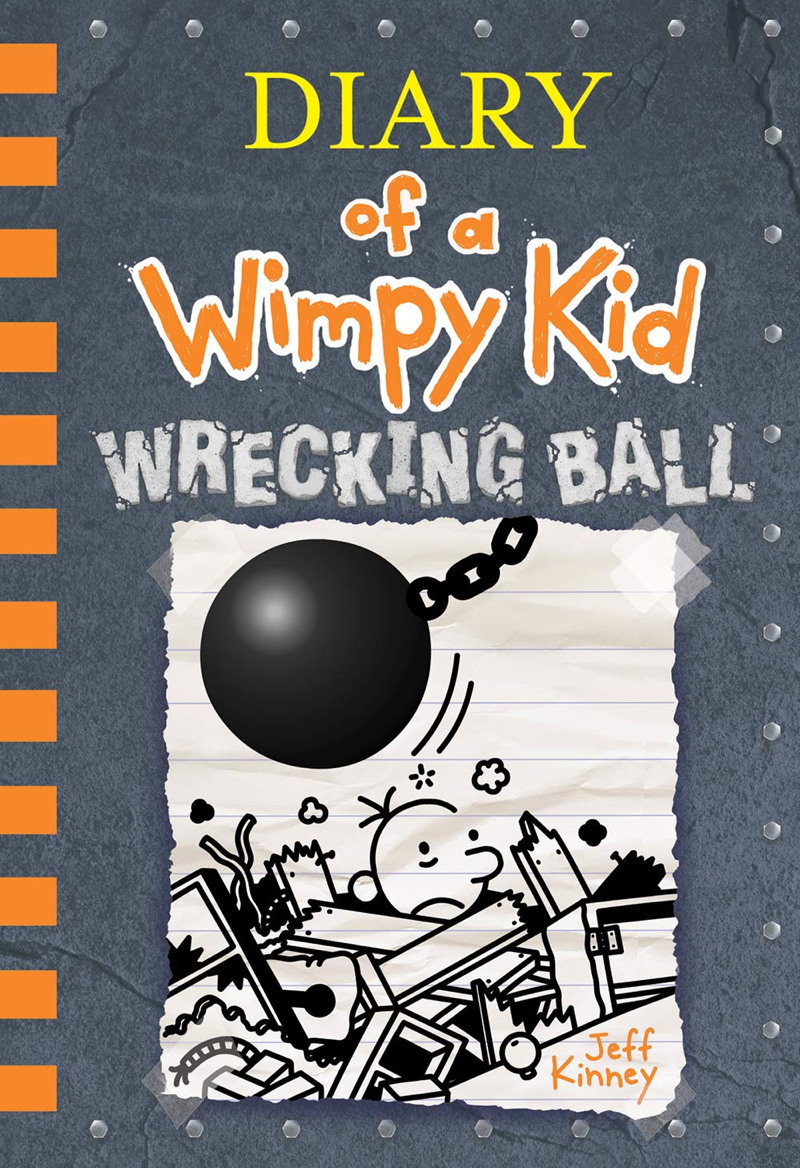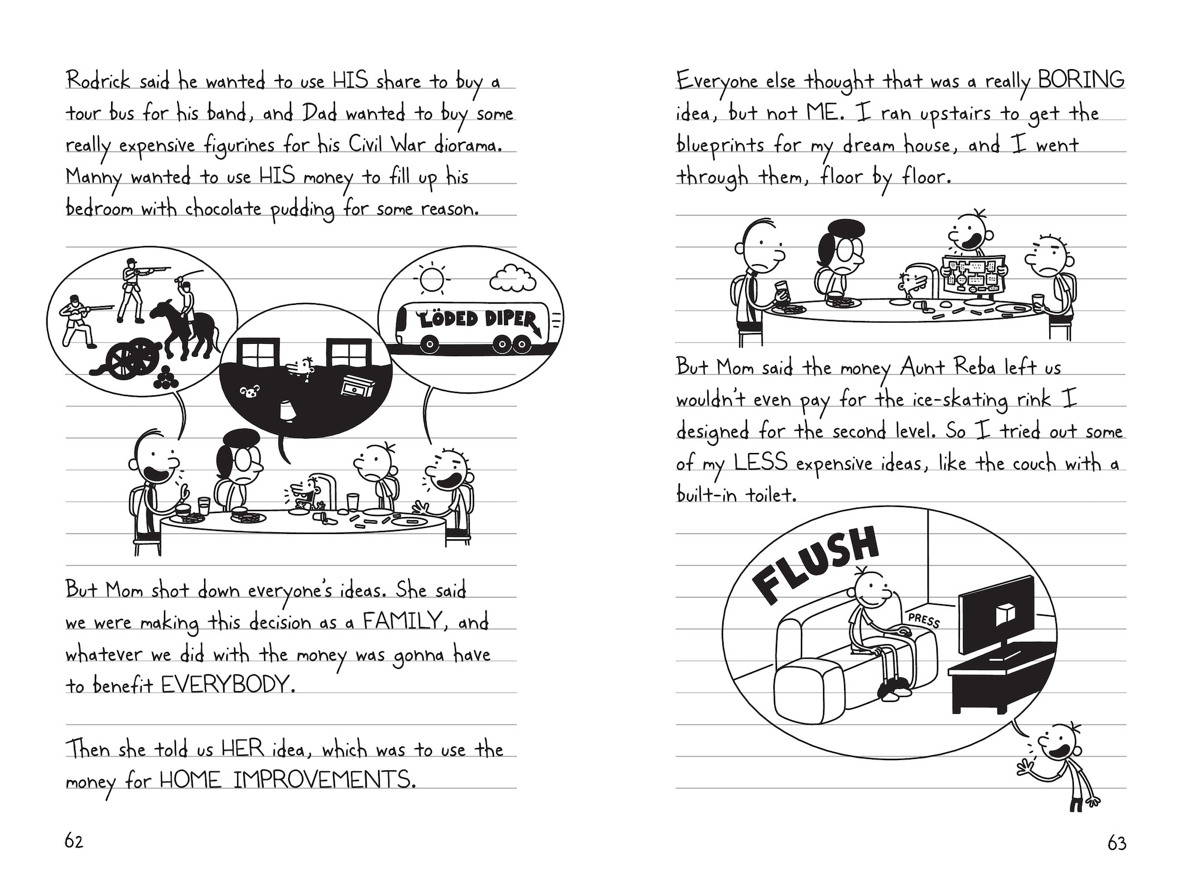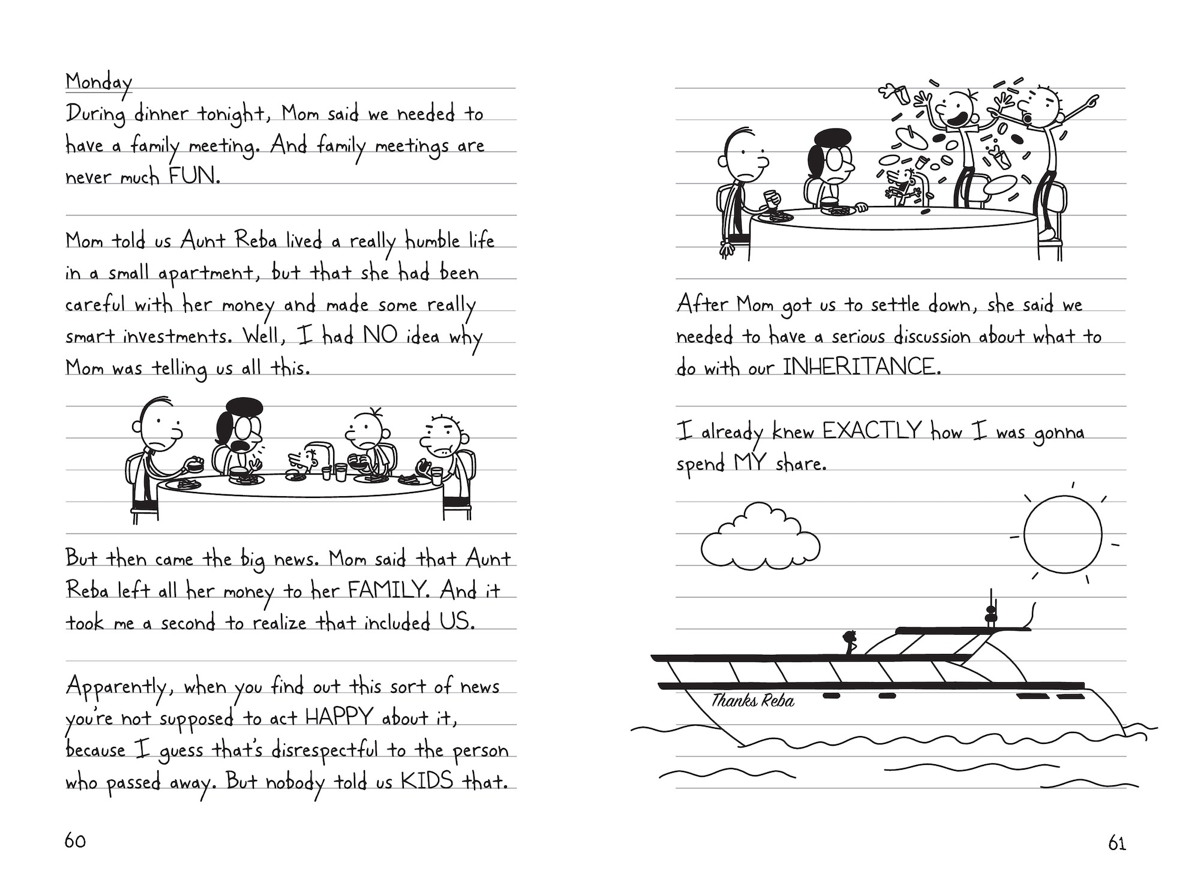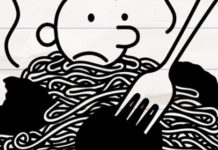The Diary of a Wimpy Kid series by Jeff Kinney is truly a publishing phenomenon with 13 books in print and more than 200 million copies sold in 73 editions and 61 languages. Middle schooler Greg Heffley’s private diary is a mix of hilarious commentary, amusing doodles, and the world as only a child can see it – and the format itself has spawned countless imitators. The books have been adapted for the stage, and four movies – and soon streaming, as the books are being adapted into an animated series for Disney+.
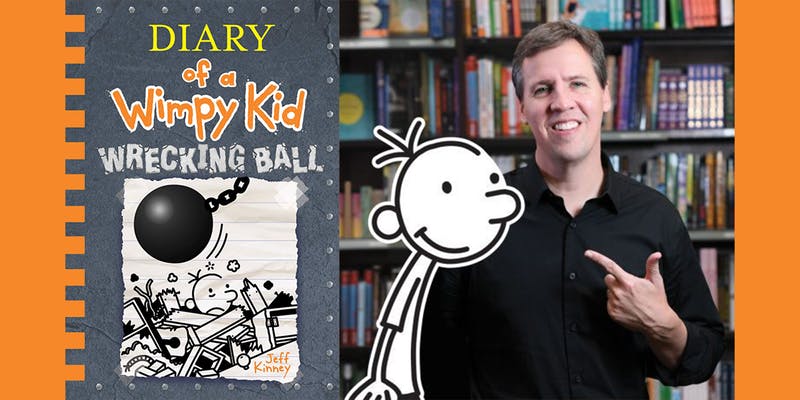
It’s a huge leap for Kinney, who started the books as a webcomic all the way back in 2004. I actually did the first ever interview with Kinney about the books – a story that ran in PW in 2006 but is now lost to the maw of the internet. Although I’ve run into him at book events over the years this was, incredibly, the first time I’d interviewed him in 13 years. It was a real pleasure to catch up with him on the eve of the book’s launch – and the launch of the Wrecking Ball tour, a highly interactive variation on the usual author talk and signing that Kinney developed for #13, The Meltdown.
THE BEAT: Wrecking Ball has a lot of themes about the home, collecting, home improvement and so on. So how did that theme come about?
JEFF KINNEY: We’re going through a lot of it ourselves, doing a major renovation. In fact we’ve been out of our house now for almost two years! So it was very [familiar.] What I’m always trying to do with my books explore some aspect of childhood that I haven’t before. And what struck me is I’ve never written about Greg moving. Moving is such a common experience for kids that I realized that I’d really missed an opportunity.
THE BEAT: It’s a very rich topic, which definitely lent itself to all kinds of humorous episodes and Wimpy Kid-esque adventures. I loved the fear of grout!
KINNEY: I was terrified after I wrote about The Grout, which felt like an original idea to me. But when we went to print. I was like oh dear, I hope nobody’s ever written about a kid thinking the grout is a monster! I looked around and I feel like I’m on pretty good ground.
THE BEAT: I come from a family of makers and builders – my cousin lives in a house that we actually built from the ground up so I know about the trouble with grout first hand.
KINNEY: In 10 years I’ve done a lot of construction. We built a bookstore from the ground up. And we’ve also been involved with building some houses and working on some other real estate. I like this world but if you put a hammer in my hand I’m getting in trouble.
THE BEAT: So it had been a while since I read a Wimpy Kid book, and maybe it was just my imagination but it seems like there’s even more illustrations than ever. Is that just me?
KINNEY: I was thinking about that earlier because one of your first articles about Diary Of A Wimpy Kid raised the question of “Is this a comic?” The illustrations are starting to overwhelm the text a little bit. So it’s creeping ever closer into pure comics territory. My last few books especially have been more cinematic, and require a lot more illustration. The early books were very sparse and minimalistic. The 12th book, The Getaway, for example, is set in an island resort and you can’t get away with minimalistic illustrations for a book like that.
THE BEAT: Well, let’s revisit this question 10 years on. Do you consider it a comic or graphic novel?
KINNEY: If I were to put a label on it I’d call it [long pause] long form comics. I’ve heard different terms – some call it a hybrid and other things are just an illustrated book. The DNA is definitely in comics but it’s just an exploded version of that. The person who has really mastered this art form is Lincoln Pierce [Big Nate], who truly mixes comics and art in a way that’s very fluid.
THE BEAT: Yeah, his stuff is very natural. Of course we also have the Dav Pilkey example of someone who started out with illustration and now he’s gone full on comics and sells just as many books. So Jeff Kinney, would you ever do a straight ahead comic?
KINNEY: Yeah, that’s a great question. I’m really hoping in a few years…I really like this awesome friendly world. You know that I’ve created a book in Rowley’s style [Diary of an Awesome Friendly Kid] and I think that really lends itself to a full blown comic. So hopefully one day we’ll see a book that’s fully illustrated by Rowley.
THE BEAT: Ah right, you launched the Rowley spinoff series. What was behind that?
KINNEY: I got to see the Wimpy Kid movie get made and there is a musical. Both are based on the first book, and the thing I’ve learned from watching those productions is that Rowley Jefferson is always the hero. And I thought it was just time to give him his own book. It started off a little bit slowly. I created a sampler for Scholastic and I really enjoyed writing in Rowley’s voice and so I expanded that and then expanded it again into a full length book. I really like it because I think it’s my funniest work. And it’s much less mechanical than a regular Diary of a Wimpy Kid book. It’s freeing to write in that style.
THE BEAT: Here’s a question from my one of my writers, Riccardo Serrano Denis, who’s actually a schoolteacher: Do you feel any added pressure knowing your books are going to schools and are sometimes part of the curriculum. Does it change your approach in any way?
KINNEY: I originally wrote Diary Of A Wimpy Kid for adults. I was thinking that it would be a book in the humor section that would be like The Wonder Years where it’s an adult looking back through the prism of childhood. And so still to this day when I’m writing my books I have that imaginary adult in mind. Anytime I slip into thinking, “Well this isn’t good enough for a grownup, maybe a kid would like it,” that’s when I pull myself back. That’s a line that I won’t walk over. So I don’t think much about the kids who are going to end up reading my books until I get out there into the world and actually meet them.
THE BEAT: There have been four Wimpy Kidd movies – I know they have to reboot when the kids get too old. It seems like it would be a surefire TV show in this streaming era.
KINNEY: I’m not sure how how much I’m allowed to say, but we’ve been working on an animation project for years and that’s my focus right now. Within the next two years you’ll definitely see Wimpy Kid on the small screen.
THE BEAT: So tell me about this tour? There’s a Wimpy Kid tour you’re going on?
KINNEY: Last year I realized that I was sort of trapped giving the same speech year after year because what people tend to like to hear is the origin story of how you became an author and there are only so many ways you can dress that up and you can’t really change your own origin story. Also I’ve got ADD, so when I’m on stage, if I’m going through something that’s very rote my mind starts to sort of slip away. So last year we decided to try to create an experience that was more like a show than a speech and signing. We created something called “The Meltdown Show” and it’s got lots of interactive components, lots of kids and parents on stage and it’s totally randomized – it’s driven by a spinning wheel. I don’t know what’s going to happen next. And that really keeps me really in the moment and creates a lot of comedy – not knowing what’s going to happen creates some really genuine experiences. We’ve got a big stage set up and this year we’ve got power tools and a dumpster and a porta-potty and all sorts of other accoutrements on stage. It’s really fun and it’s really portable. Last year I took The Meltdown Show to about seven different countries and then in the spring I took it to Dubai. It really is fun and different.
THE BEAT: Wow. That’s such a change! How did you collaborate? The stage is so experiential. I find people who are good at writing or drawing aren’t necessarily performers. It’s such a different medium. How did you go about doing this?
KINNEY: There’s a company called Switch that we work with that’s really good at this kind of thing. They helped create the staging, and they sourced the props, like the porta-potty. They do a great job – they’ve got a lot of experience.
THE BEAT: Did you feel comfortable with this new, unpredictable model for the stage show?
KINNEY: Yeah! It’s really funny. We have some things that I cooked up for the show which I really didn’t know if they were going to work. One or two of them didn’t work at all and we had to quickly abandon them. But one that worked really well last year was we brought moms up onto the stage to have a dance-off. And for the winner I do a Skype with their kids’ classroom. That was so funny. No matter where we went, no matter what country we were in, that was the hit of the show. We decided to keep that this year.
THE BEAT: You said you went to Dubai. One of the things I’ve written about on the Beat a lot is how every country has its own iconic child comics characters. In France they love Titeuf by Zep, and he’s a lot naughtier than you might see in the US – sometimes it doesn’t translate. How does Wimpy Kid travel around the world?
KINNEY: I think it travels pretty well. I see some books as mirrors and some as windows. I see my books as a mirror. Kids can pretty easily transfer themselves on to Greg. I’ve really found that childhood is universal. For the most part, we’re all dealing with the same kinds of things – kids and teachers and pets and bullies and homework. Kids really see themselves in this world. and that’s why it’s done well overseas.
THE BEAT: Yeah, obviously, it’s a very humorous take but what Greg’s dealing with a lot of time is the anxiety that all kids feel. I’m curious – you said your house has been under renovation for two years? That sounds crazy.
KINNEY: We started renovations on our house with the intention of making the house more accessible – we have a few family members who are having trouble getting around. We also wanted to make some changes because we realized that with the bookstore, we’re really locked in to Plainville [Massachusetts, where Kinney lives] probably for the rest of our lives. When we started working on it, we kept the framework of the house intact. But over time that that became less and less possible – we made really big changes and the house was really down to its framework – and we’ve built it back up.
THE BEAT: Well, at least you’ll end up with the house you want. So I have talked to you since you started this bookstore [An Unlikely Story Bookstore & Cafe in Plainville, Mass.] – how has that been going? I think when it was first announced, it sounded like “Oh look Jeff Kinney is making a stand for bookstores and he’s going to try to save them!” And then it turned out that indie bookstores are actually doing really well and books are still around. What’s been your experience of owning this bookstore?
KINNEY: It’s really the best part of my professional life. It’s really exciting to have a bookstore, and it’s always filled with happy people. We’ve had to build two additional parking lots for the number of people that come through. And once or twice a week we have nationally and internationally famous authors come here – we might have RJ Palacio or Henry Winkler or any number of celebrity authors coming through our little town of Plainville. It’s really enriched our lives. It’s sort of ironic because we have this sleepy little town of 8,000, and then we have these big stars. It’s overwhelming at times actually having the bookstore because it’s such an entity unto itself. But it’s great. My original intention was just to put a nice building in the middle of our town that’s kind of in some ways stuck in the 1950s. We just wanted to put a nice building there so that we had a little bit of civic pride. The bookstore just grew out of that idea.
THE BEAT: Do you have a big graphic novel section in your bookstore?
KINNEY: Yeah I’d say there is an appropriately sized graphic novel section. We really are a general book store but we do have two bookcases of graphic novels.
THE BEAT: [laughs] Well of course kids graphic novels are the hottest category in bookselling right now!
KINNEY: I know! And the line keeps getting blurrier with trim size. Dog Man is definitely a graphic novel but it’s got the trim size of a middle grade reader. I was so happy Raina [Telgemeier] had the number one book in the country. Guts single handedly brought back the graphic novels best seller list in the New York Times and the middle grade paperback list – that was amazing. I thought that was an amazing statement about Raina’s work and also the reality of graphic novels being so well read.
THE BEAT: Well, Wimpy Kid is no wimp when it comes to the sales charts either. You’ve had the #1 kids book for several years.
KINNEY: Yeah, it’s exciting. You know I always wonder will this be the year that things change? I think I was #1 on Amazon this morning so I’m just so relieved and happy that there’s still an appetite for these books that are still they still they still speak to kids.
THE BEAT: So I have to ask the typical question: Do you think you’ll ever run out of ideas for Wimpy Kid or Rowley?
KINNEY: Childhood is a big universe. I look at cartoonists like Charles Schulz who kept Peanuts going for 50 years and I think, you know, if I make it to 20 I’ll feel really good about it. But hopefully I’ll be writing about this stuff for a long time to come.
[This interview has been edited and condensed for clarity. Affiliate links may earn comission for The Beat.]


